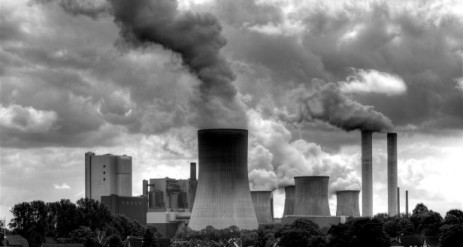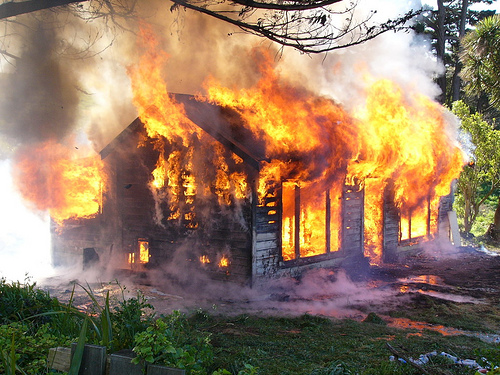Yesterday I explained how the American Power Act would both curb and expand EPA’s authority to clamp down on greenhouse gases (to net positive effect, or so I argued). I ended with this teaser:
Now, there is one extremely good reason to want to preserve Clean Air Act stationary source tools for greenhouse gases: America has a filthy, aging, wheezing fleet of old coal plants, and they badly need to get shut down or dramatically upgraded. These plants are responsible for a disproportionate share of the power sector’s CO2, soot, and mercury, but they are fully paid off and cheap as hell to run, so it’ll be a while before a price on carbon gets high enough to hurt them. In the meantime, some sort of regulatory tool is needed to do the job. Some progressives claim the Clean Air Act has such tools and the American Power Act doesn’t. But they’re wrong!
So let’s take a closer look at this issue of coal plants.
Currently, the Clean Air Act can regulate new (or substantially modified) coal plants through the New Source Review program, one of its most contentious and litigated provisions. (For a primer on how the Act would tackle greenhouse gases, see here.)
The American Power Act, like the House climate bill passed last summer, contains statutory performance standards for new coal-fired power plants. They must sequester 50 percent (if permitted before 2020) or 65 percent (if permitted after 2020) of their CO2.
So new coal plants are getting regulated regardless. But what about the old ones?
Here’s where the American Power Act actually has an advantage. There’s an Easter egg in it, which has gone almost entirely unremarked since the its debut: the bill amends the Clean Air Act to give EPA authority to set performance standards for existing electrical generating units, i.e. old coal-fired power plants. (For the gory details, see this nerdy footnote.)
When it comes to coal plants, EPA has more power with the American Power Act than without it. [UPDATE/CORRECTION: This isn’t quite right. The EPA would (probably — see second footnote) have the authority to regulate existing coal plants in the absence of the climate bill. The APA just clarifies and solidifies that authority. For more gory details, see this second nerdy footnote.]
What coal-plant performance standards might look like under the American Power Act
The power to implement performance standards for existing coal plants is a Very Big Deal. (Granted, it would be better if the bill preserved this authority for all stationary sources. But still.) Big coal utilities are very likely to try to kill this provision.
How would performance standards for existing coal plants work? Ultimately it would be at EPA’s discretion. The relevant part of the Clean Air Act — Sec. 111(d) — says that authorities are permitted to take into account “the remaining useful life of the existing source to which such standard applies,” and remaining useful life turns out to be a pretty potent notion. You can imagine EPA proposing something like the following: For plants with 5 years of remaining useful life, performance standards only require some tweaks to operational efficiency. For plants with 10 years of remaining life, standards might require biomass cofiring or fuel switching. For plants with 20 years of remaining life, standards could be the same as the ones for new coal plants (50 percent CO2 sequestration by 2020).
Or whatever. The point is, EPA could use this provision to finally start the clock ticking down on the old, dirty coal plants that have so long vexed enviros (to say nothing of the people made sick by their pollution). It isn’t the ideal way to address existing coal plants, but with a smart EPA and a willing administration, it could make a big difference.
While we’re on the subject of existing power plants, there are other measures in the bill to accelerate the transition away from dirty coal, namely “financial and regulatory incentives, including expedited proceedings” for projects that shut down, retrofit, or switch fuels in old power plants. Depending on how powerful those incentives turn out to be and how performance-standards are implemented, the American Power Act could add up to a pretty decent way of taking on old coal. That’s something enviros have been seeking for decades.
Of course, enviros have also been defending the Clean Air Act for decades. Tomorrow we’ll take a look at the tools that are preempted by the bill and figure out whether they’re worth going to the mat for.
——
Nerdy footnote: It’s down in Sec. 2302 of American Power Act, “Standards of Performance for Greenhouse Gases.”
Most of the section is devoted to the dreary work of preempting the Clean Air Act’s New Source Performance Standards, at least for sources that fall under the cap-and-trade program. But it also amends Clean Air Act Sec. 111(d), an obscure, rarely used provision allowing EPA to set performance standards for pollutants that aren’t covered by ambient air standards or by the hazardous pollutant provisions. (There aren’t many, which is why it’s rarely used.) Since greenhouse gases are excluded as criteria pollutants under they ambient and hazardous standards, they fall into this nebulous category, and are thus subject to performance standards under 111(d).
For the most part, the bill turns right around and yanks that 111(d) authority away. But here’s the Easter egg:
(A) IN GENERAL. — Except as provided in subparagraph (B), no standard of performance shall be established under this section for capped greenhouse gas emissions from a capped source unless the Administrator determines that the standards are appropriate because of effects that do not include climate change effects.
(B) EXCEPTION. — Subparagraph (A) shall not apply to covered EGUs (as defined in section 801(a)) that are not subject to emission limits under section 801.
In English: sec. 111(d), performance standards for “other” pollutants, can’t be applied to greenhouse gas emissions from sources under the cap except EGUs (electrical generating units), which in this case means coal plants. Coal plants can be regulated under 111(d).
Second nerdy footnote: Okay, I was wrong/confused about one thing. Sec. 111(d) does in fact apply to pollutants that aren’t listed under ambient air standards (Sec. 108) or hazardous standards (Sec. 112), as I said. I had thought that the EPA would have to list GHGs under one of those sections in order to regulate them under New Source Review — which would place it off-limits for 111(d). But I was wrong! All the EPA requires in order to apply New Source Review is the endangerment finding, which it has. The agency is likely not planning to list GHGs under 108 or 112. What this means is: the EPA currently, whether or not legislation passes, has the authority to use 111(d) for GHGs. So it’s not quite accurate to say the EPA has more authority over coal plants under a climate bill than it does without one.
That said, EPA’s decision not to list GHGs under 108 ambient air standards is quite likely to be subject to legislation — industry groups will try to argue that the EPA has to use 108. One possible outcome is that the EPA is forced to use 108, which will put 111(d) off the table. But even absent that, the case could drag on for years, be appealed to higher and higher courts, and end up in the Supreme Court four to five years later — and in the meantime, EPA will be prevented from using 111(d) until the lawsuit is settled.
So, what the American Power Act does is effectively avoid that lawsuit my mandating, in statutory law, that 108 won’t be used and 111(d) will. That will enable EPA to move more quickly, but it’s not strictly accurate to say that it gives EPA new aurhority.
Get all that? If not, feel free to email me. And yes, I think my nerdy footnotes are now longer than the post …



